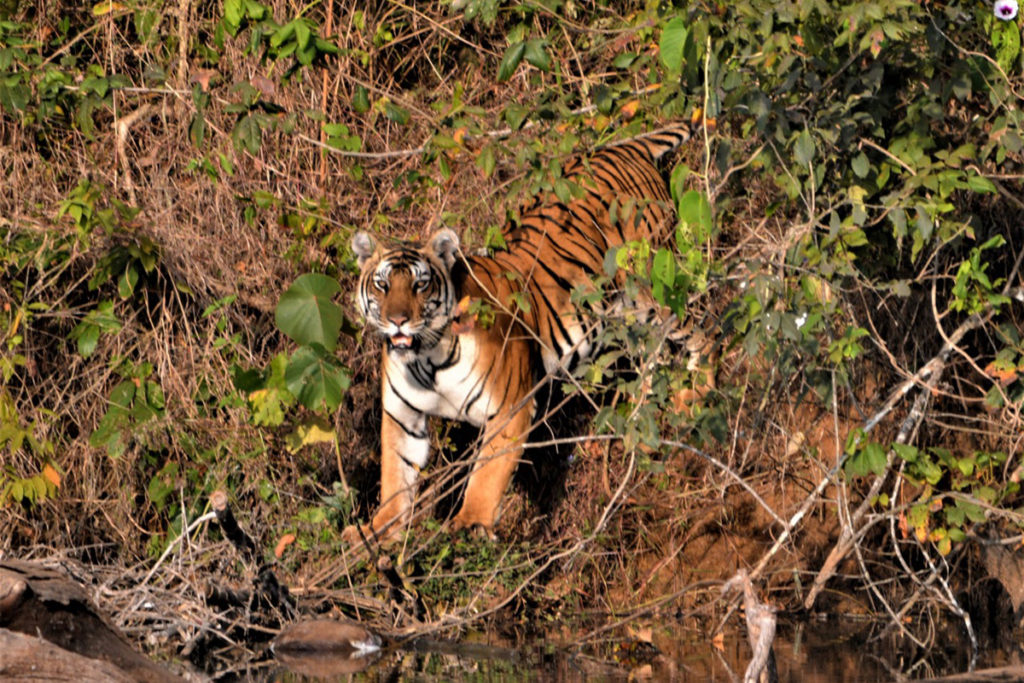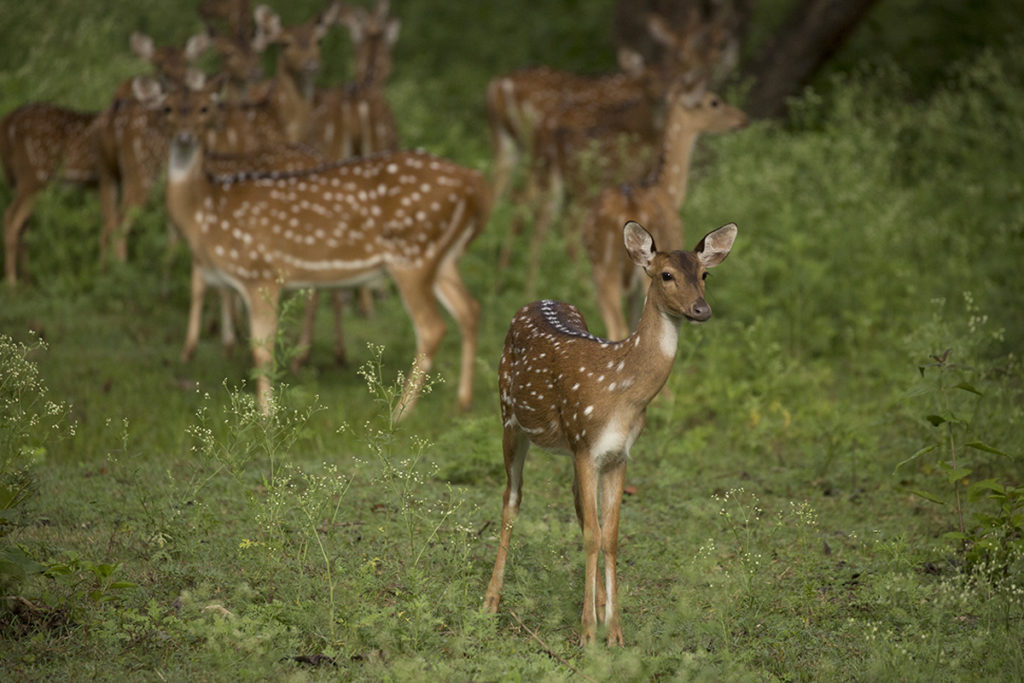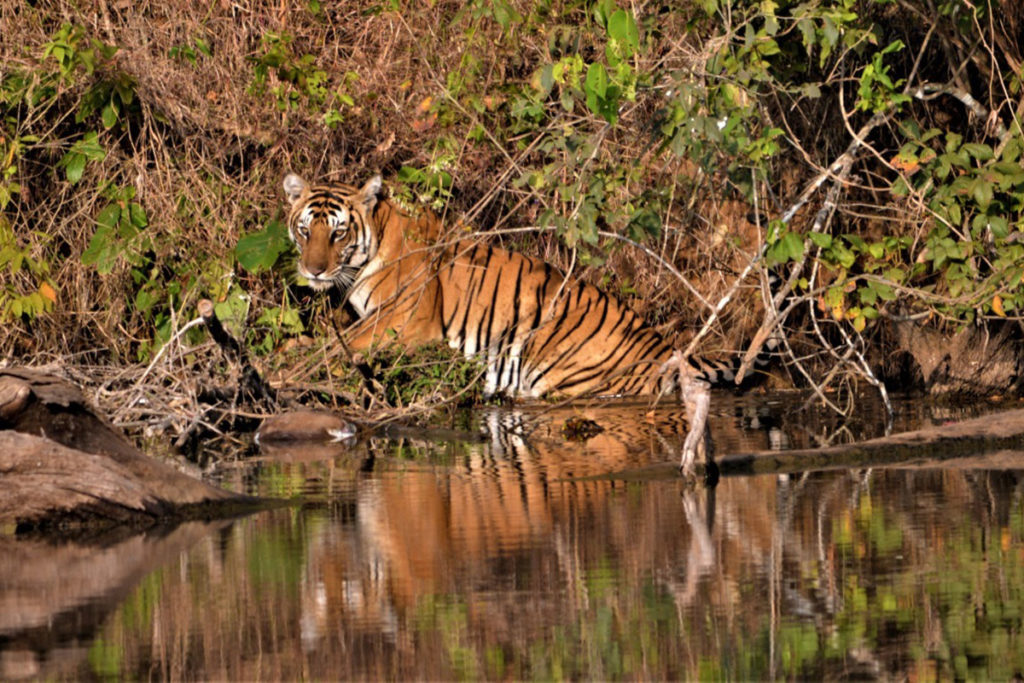Meera Bhardwaj
Although the tigers’ roar can be heard with all its might in Karnataka with a 30 per cent rise in their numbers but are the premier tiger reserves of Bandipur-Nagarhole in a position to hold more than 250 big cats? The combined territory of both the reserves is just about 1490 square kilometers and is now carrying a tiger for every six square kilometers.

Falling in the Western Ghats Landscape, the five tiger reserves of Karnataka is home to almost 370-380 tigers while the Nagarhole-Bandipur belt alone is a premier habitat for more than 250 tigers with a rich prey density. If Bhadra is housing 40 tigers and Kali (14-16), then BRT is a safe home for almost 60 tigers.
Senior forest officials say the reason for the big rise in tiger population is due to good protection measures, increase in number of anti-poaching camps, good prey density and creating huge awareness about tiger conservation across the state.

Praveen Bhargav, Wildlife First says, “Actually the Nagarahole-Bandipur-Waynad-Bramhagiri-Mudumalai-Sathyamangalam-BRT is a contiguous landscape extending over 5500-6000 sq km across three states with a mosaic of habitat from scrub forests to rain forests. Further, to the north of Nagarhole, it is a notified buffer zone comprising reserved forests. It is fragmented at places with highways, dams, human settlements, resorts, etc and has hard edges with villages and coffee estates.”
Bhargav adds, “Therefore, while connectivity does exist, fragmentation needs to be minimized through a slew of measures including stoppage of all proposed linear intrusions and finding alternative alignments for existing ones, strategic acquisitions of large coffee estates in the cusp of Nagarahole-Wayanad-Bramhagiri, fast-tracking the voluntary resettlement of interior settlements and recovering land from resorts blocking migratory corridors. Funding for all these can come from the large CAMPA fund which will also be fully justified considering the fact that this landscape has the largest meta-population of both tigers and Asiatic elephants.”
Former chief wildlife warden C Jayaram who oversaw most of the tiger census exercise in Karnataka expresses serious concern about Bandipur-Nagarhole in the coming days. He adds, “It is going beyond the manageable proportions as it holds more than 250 tigers. If it was having corridors to other PA or buffer area, the pressure would have been less on these two tiger reserves. For example, MM Hills which will soon become a tiger reserve has a good buffer in Satyamangalam but not these two.”

With increasing densities, both Bandipur and Nagarhole need connection to BRT and Bramhagiri respectively. Jayaram adds, “Connecting Nagarhole to Bramhagiri is the need of the hour and I had proposed private conservancies in a few coffee estates – Hoovinakadu and Faith and make way for wildlife movement preferably having under bridges. There is good amount of forests on the other side and this connection will reduce elephants from crossing over to Hassan district. With regulations in private conservancies, we could have ensured a wildlife corridor to Bramhagiri”.
The former chief wildlife warden says the other alternative Wayanad was ruled out as it is not a tiger reserve and lot of development works were taking place within the sanctuary. And even crossing over to Bandipur was not feasible with its heavy tiger density. Now regarding Bandipur, the only feasible solution is having connectivity to BRT but this is a long stretch. “There is a huge gap between these two PA as we have lost the forest areas and only a bit of foothills are left. Here, by giving incentives and sops to farmers, we have to encourage private conservancies to give way for wildlife to move towards BRT. People should come forward to associate with forest department and give their land for wildlife movement. We have to look for continuity of forest lands otherwise in the days to come; conflicts with tigers will be seen often as it is happening with elephants.”

Comment here